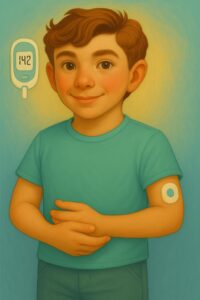Type 1 diabetes is a chronic autoimmune condition in which the body’s immune system attacks and destroys the insulin-producing beta cells in the pancreas. Without insulin, the body can’t properly regulate blood sugar (glucose), leading to dangerously high levels.
People with Type 1 diabetes need daily insulin therapy to survive. It usually starts in childhood or young adulthood, but it can occur at any age.


